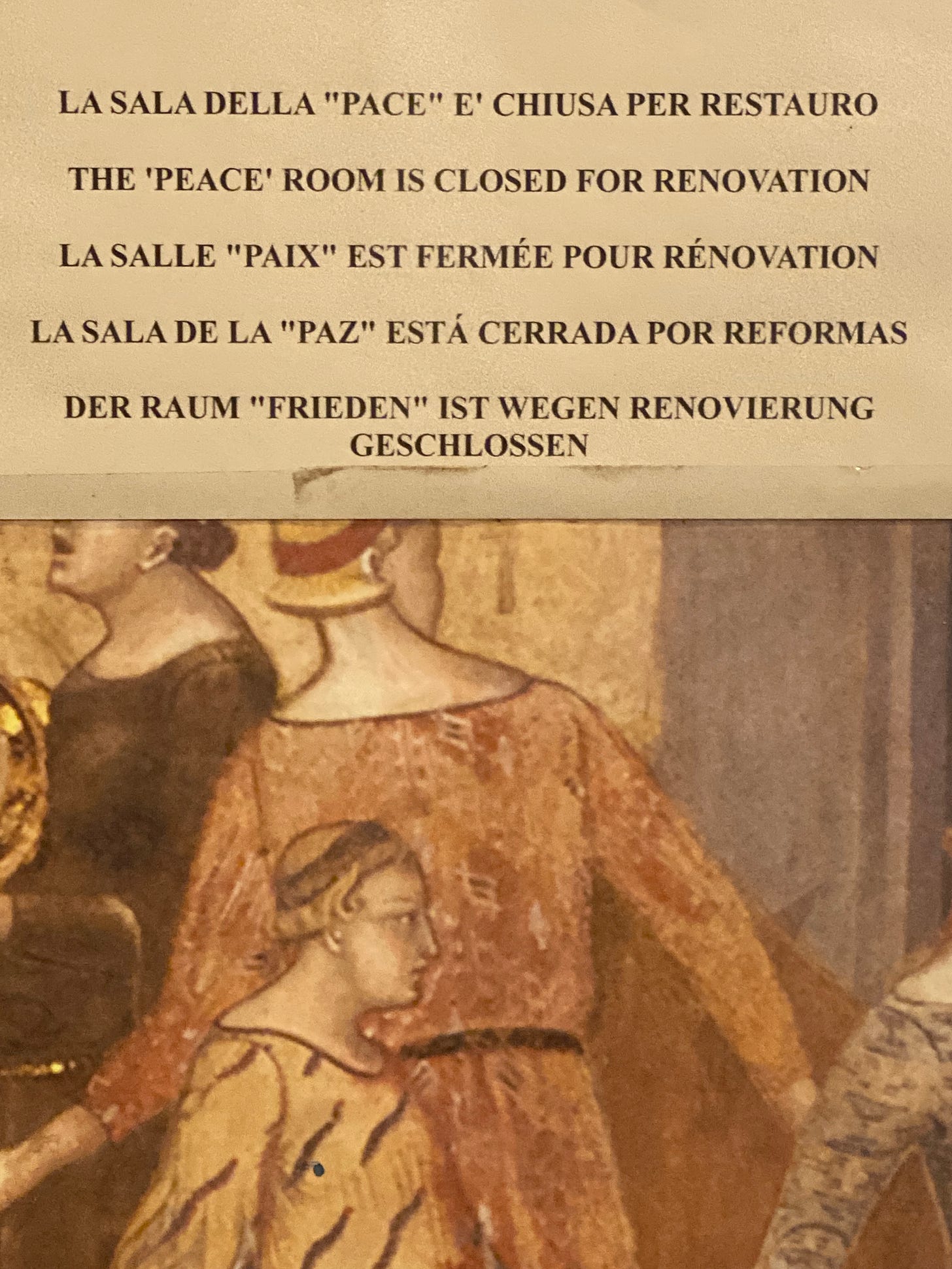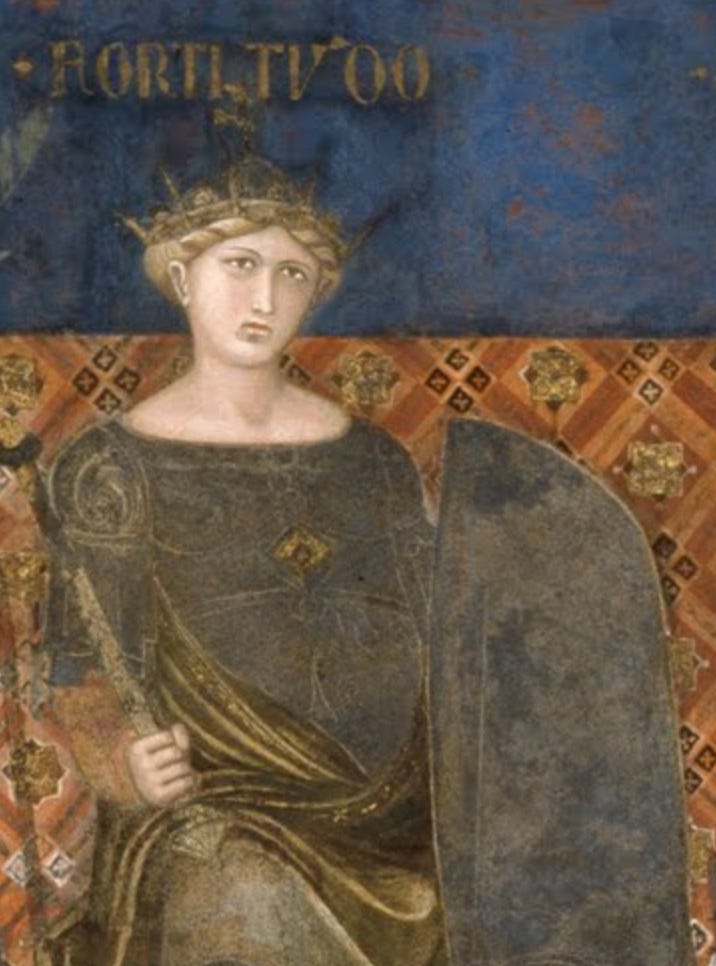Hi
I’m back after a few weeks with what I think is a 3-parter but we’ll see.
A week away
I went to Italy for a week on the generous invitation of a friend who is at the Siena Art Institute on a residency. I visited Siena and Florence and the Tuscan countryside for a couple days each, American-style 🙄, with my friend.
The Black Death
In November 2019, after reading a review in the New York Times, I borrowed A Month in Siena by Hisham Matar from the library. I loved the book, a memoir essentially about looking at paintings in Siena, through the lens of grief. I wanted to go to Siena and look at the paintings he writes about, primarily the Lorenzetti frescoes.
Before going to Italy mid-month, I finally bought and re-read the book and was reminded about the plague parts, published just before the Covid pandemic. About three quarters of the way through the short book, he writes about the Black Death in the chapter “The Problem with Faith”:
…”Notions of life and death were forever altered. A shadow had fallen and has remained here with us ever since, affecting all sorts of human enterprises, perhaps the greatest of which is the imagination….After 1348 art changed because man changed.”
The chapter almost made me fall off my chair for how prescient and poignant it was, and especially so four years in with all the war, war mongering, disinformation, loss, death, and epochal change.
Looking
👀👀👀👀👀👀👀👀👀👀👀👀👀👀👀👀👀👀👀👀👀👀👀👀👀👀👀👀👀👀👀👀👀👀👀👀👀👀👀👀
When we arrived at the Palazzo Pubblico to see the 1338 frescos representing the allegories of good and bad government and the effects of good and bad government by Lorenzetti, the Peace Room which houses them was closed.
With some sleuthing, we managed to get into an Italian-language afternoon tour of the room, perched on squeaky scaffolding, we were summarily shooshed by the tourguide if we changed positions or moved around the group in any fashion. Stopping and looking was the only activity available because no photos were allowed and we couldn’t understand the guided tour, and these limitations turned into somewhat of a gift.
The frescoes are on the upper level of a double-height room, ordinarily gazed at from an extreme angle below. So seeing them straight on, and at close proximity was simultaneously a privilege and a tiny trespass of prescribed subject-position.
In The Allegory of Good Government there are a lot of women representing the various virtues. Wisdom, Faith, Charity, Hope, Justice, Peace, Fortitude, Prudence, Magnanimity, Temperance, and another Justice, with a decapitated head under the butt of an erect sword and a crown in her lap.
[the detail images below are taken from high resolution photographs sourced on wikipedia and flickr, as no photos were allowed during my visit]
Hisham Matar, who spent hours in front of the frescoes during his sojourn in Siena, writes about peace (or Peace) in context:
To the left of the figure representing the Common Good sits the Virtue Prudence. She is pointing to an object, perhaps a water clock, that reads "Past Present Future."
Beside her is Fortitude
and then, reclining languidly in a sheer white dress, there is Peace.
She resolves the picture, offers it a center, a place for the eye to land. She is why this room, the Sala dei Nove, is also known as the Sala della Pace, "Hall of Peace." She is, it now appears, the organizing principle: both of the rest of the activity in the fresco and, by implication, the proposed system of governance. This is partly because of where Lorenzetti has placed her and partly because of her expression: waiting, monitoring, listening, her hand shelving her open ear, which is pointed toward us.
Beneath her feet, as well as buried under the cushion on which she is resting her arm, are black bundles. It took me a moment to realize that they are pieces of armor, denoting how in the presence of peace there is no need for battle. But the detail is oxymoronic: armor, a thing used for protection and concealment, is itself being concealed. There is also something comically slapstick about how Peace seems to be pretending that nothing is there: Armor, what armor?
More soon,
Sara
Further Reading
Hisham Matar A Month in Siena
Hisham Matar on how the Black Death changed art forever in the Guardian (June 2020)







